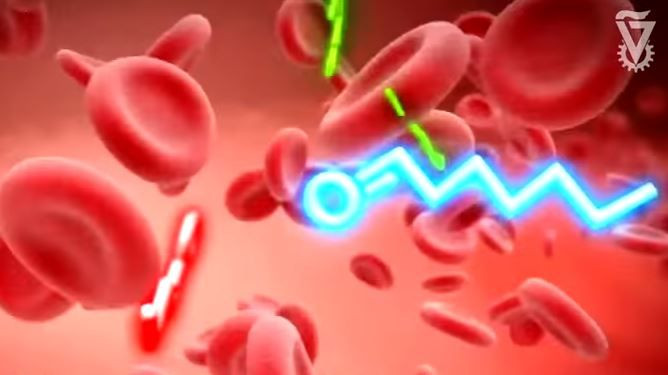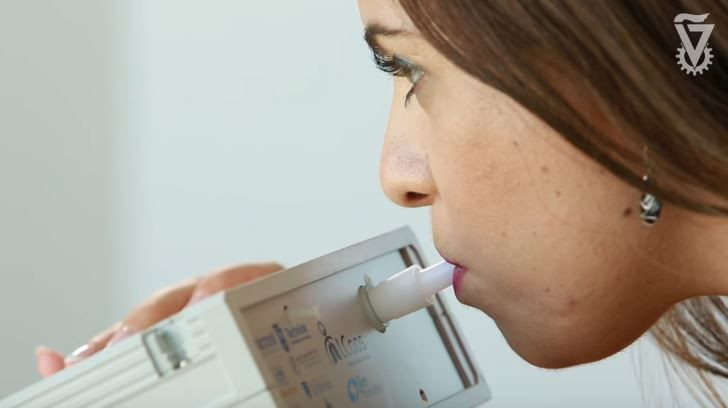After Smelling Your Breath, New Device Can Diagnose 17 Diseases Including Cancers, Parkinson’s, Multiple Sclerosis, Kidney Disease

Imagine finding out what’s making you feel sick just by breathing. That idea is the goal of a new technology that researchers are saying can detect 17 different diseases just by “smelling” a patient’s breath.
The Na-Nose device has been compared to a breathalyzer, and according to a study published in the journal ACS Nano, it can determine whether someone has certain diseases with 86 percent accuracy. Those medical conditions include are as varied as certain cancers, Parkinson’s, multiple sclerosis and kidney disease, among others.
Read: Lasers and Ocean Bacteria Kill Cancer
The device is able to distinguish between the diseases because it picks up on something called volatile organic compounds that the diseases cause to be emitted in a person’s breath. According to the researchers, the 17 conditions all resulted in 13 specific compounds being released, but each with their own pattern.
“Each disease has its own unique breathprint,” the study says — and that unique signature distinguishes it both from other diseases as well as a healthy subject.
The Na-Nose was tested with breath samples from about 1,400 people in various countries and was able to accurately diagnose disease almost nine out of 10 times. Additionally, the presence of one disease’s breathprint does not stop the device from detecting an additional disease breathprint if it too is present.
Hossam Haick of the Technion-Israel Institute of Technology, who led the research, explained in a YouTube video from Technion that Na-Nose imitates a human’s or dog’s sense of smell to analyze a patient’s breath. It can determine “whether the patient is healthy or has a disease, and to predict who are the healthy people who have a high risk to get disease in the future.” He emphasizes one potential benefit of the device: catching diseases earlier. Earlier detection often means a better chance of survival for people with diseases like cancer, and Haick says with lung cancer alone the Na-Nose’s ability of early detection can raise survival rates from 10 percent to 70 percent.
The study notes the value of such technology in terms of access, saying it is easy to use and repeat tests, and has potential to be made low-cost and “ultraminiaturized.”
“Breath is an excellent raw material for diagnosis,” Haick told Israeli publication Haaretz. “It is available without the need for invasive and unpleasant procedures, it’s not dangerous, and you can sample it again and again if necessary.”
The idea itself of using smell to diagnose disease is not new. Quartz notes that in the last decade researchers have worked on such tests for diseases like tuberculosis or cystic fibrosis — in the case of the latter, a test takes advantage of the fact that patients “produce nearly four times as much acetic acid (the base chemical in vinegar) as healthy people.”

And in ancient times, the study notes, doctors would sniff their patients’ poop in the interest of medical diagnosis.
According to Haick, the device has been used on thousands more patients since the trial and he would like to see it available on the market soon. He also sees the Na-Nose becoming integrated into everyday life. He says in the Technion video that it could be added to a smartphone and analyze breath as someone talks on the phone, keeping a clinic out of the equation.
Even if we feel healthy, “the device has much more sensitivity to feel whatever we don’t feel as healthy people,” Haick says.
Source: Haick H, Nakhleh MK, Amal H, et al. Diagnosis and Classification of 17 Diseases from 1404 Subjects via Pattern Analysis of Exhaled Molecules. ACS Nano. 2016.
See also:



























